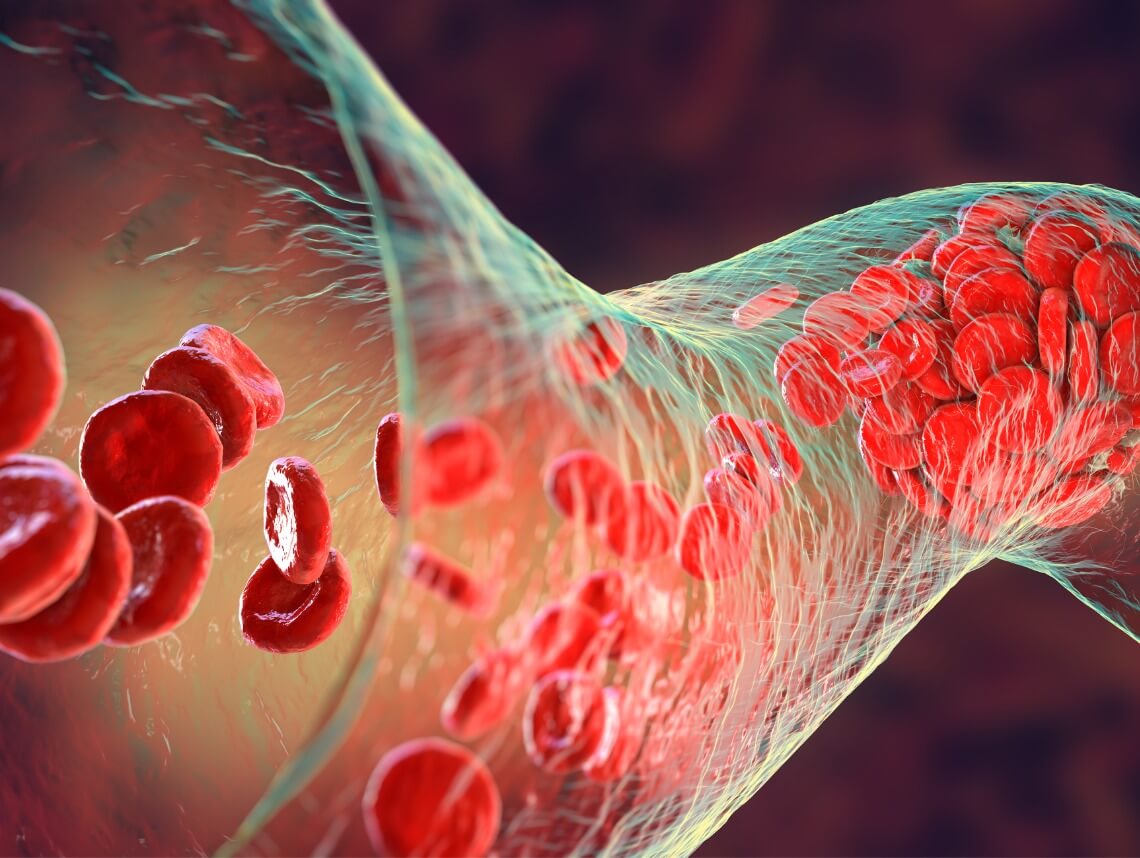
Blood clots, or thrombosis, may be less frequent in children compared to adults, but because young people are still growing the effects can be amplified. As statistics show a dramatic increase in pediatric thrombosis in recent years, this has become a medical condition that more and more families are facing.
We understand that finding out your child is dealing with blood clots or has a higher risk of developing them can be very alarming. By learning more about the causes, treatment options, and how to care for a child with pediatric thrombosis, you can take charge of your care journey and make informed decisions for your family and child.
What is thrombosis?
Thrombosis is the medical term for a blood clot that does not break up and can be potentially harmful. These clots can disrupt normal blood flow and can be potentially life-threatening in some circumstances. Pediatric thrombosis is when this happens in younger patients.
Clotting, or coagulation, is a normal and essential function of the blood. It stops us from bleeding when there is a cut or injury so that we begin healing and don’t lose too much blood. Once the wound begins to heal, the clot is supposed to break up so blood can return to normal.
With thrombosis, a set of contributing factors causes the blood clot to remain in the bloodstream. This can disrupt the blood flow that sends vital oxygen and nutrients throughout the body, resulting in harmful symptoms and ongoing health problems. A related condition is known as thrombophilia, which describes the tendency to develop blood clots, whether due to genetics, lifestyle factors, or a related medical condition.
What causes blood clots in a child?
In children, a tendency for thrombosis to develop can be inherited or acquired. With inherited thrombosis, factors within the blood can make it more likely to develop abnormal clots. Acquired thrombosis can be related to a medical condition, lifestyle factors, or certain medications.
Blood Clot in Child: Risk Factors
Specific risk factors for blood clots in children can include:
- Hospital stay
- Traumatic injury
- Family history
- Infections
- Immobility or a highly sedentary lifestyle
- Taking coagulant medication
- Being overweight or obese
Blood Clot in Child: Symptoms
Depending on the size and location of the clot, symptoms of thrombosis can vary widely. Thrombosis can occur throughout the body, with the most common locations being the arms and legs, which is called deep vein thrombosis. A particularly serious form of blood clot is if the clot gets loose in the bloodstream and travels to the lungs, which is called a pulmonary embolism.
Signs and symptoms of pediatric thrombosis to watch for that require immediate medical attention include:
- Pain
- Swelling and inflammation
- Warmth around the area
- Low fever
- A knot that can be felt below the skin
- Difficulty breathing and chest pains are a sign of pulmonary embolism
Blood Clot in Child: Complications
Long-term complications of untreated thrombosis can include enlarged veins, chronic discomfort and pain in the area, and skin discoloration. Recurring thrombosis in certain areas can increase the risk of pulmonary embolism, which can be life-threatening.
Diagnosing Blood Clots in Children
Diagnostic tests to determine if your child has thrombosis or thrombophilia include:
- Review of medical history and family medical history
- A full physical examination
- Genetic testing in some cases
- Diagnostic imagery such as MRI or CT scan to create an image of the clot for analysis
- Blood work to identify proteins and abnormalities that may be causing thrombosis
Blood Clot in Child: Treatment Options
It is important to work with your doctor to develop an individualized treatment plan that is right for your child’s age. Overall health, the severity of the underlying condition, and other factors all play a role in the type of treatment recommended. Common options for preventing clots from enlarging or new clots from developing include anticoagulation medications, injections, thermotherapy, compression therapy, physical therapy, lifestyle changes, and nutritional counseling.
Caring for a Child with Blood Clots
It is normal for children living with pediatric thrombosis and/or thrombophilia to have ongoing care needs. This includes but is not limited to managing medication, attending regular appointments for monitoring and treatment, staying active, and meeting nutritional needs. Caring for a child with thrombosis can require a careful balancing act, especially with busy schedules and different family arrangements.
This is why a growing number of families dealing with pediatric thrombosis and other conditions turn to pediatric home health services. By bringing an experienced and compassionate home health professional into your home, you can help ensure your child is receiving the level of care they need to maintain a happy, active childhood.
Contact Care Options for Kids for Pediatric Home Health Care in Florida
It can be hard to balance your time between work, home, and caring for a child. That’s why our team of professionals at Care Options for Kids is here to help. We have been enforcing precautionary measures and following the Centers For Disease Control (CDC) guidelines for COVID-19 to ensure the safety and health of our clients and employees.
Our home health care services offer support in the comfort of your home. We refer loving and competent nurses to provide customized care for families — from a few hours a day to around-the-clock supervision. Contact us directly to speak with a home health care professional or request a free in-home assessment. Together we can determine the best plan of action to keep your loved ones happy and healthy.
If you or a loved one are considering Pediatric Home Health Care Services in Florida, contact the caring staff at Care Options for Kids. Call today at (888) 592-5855.
